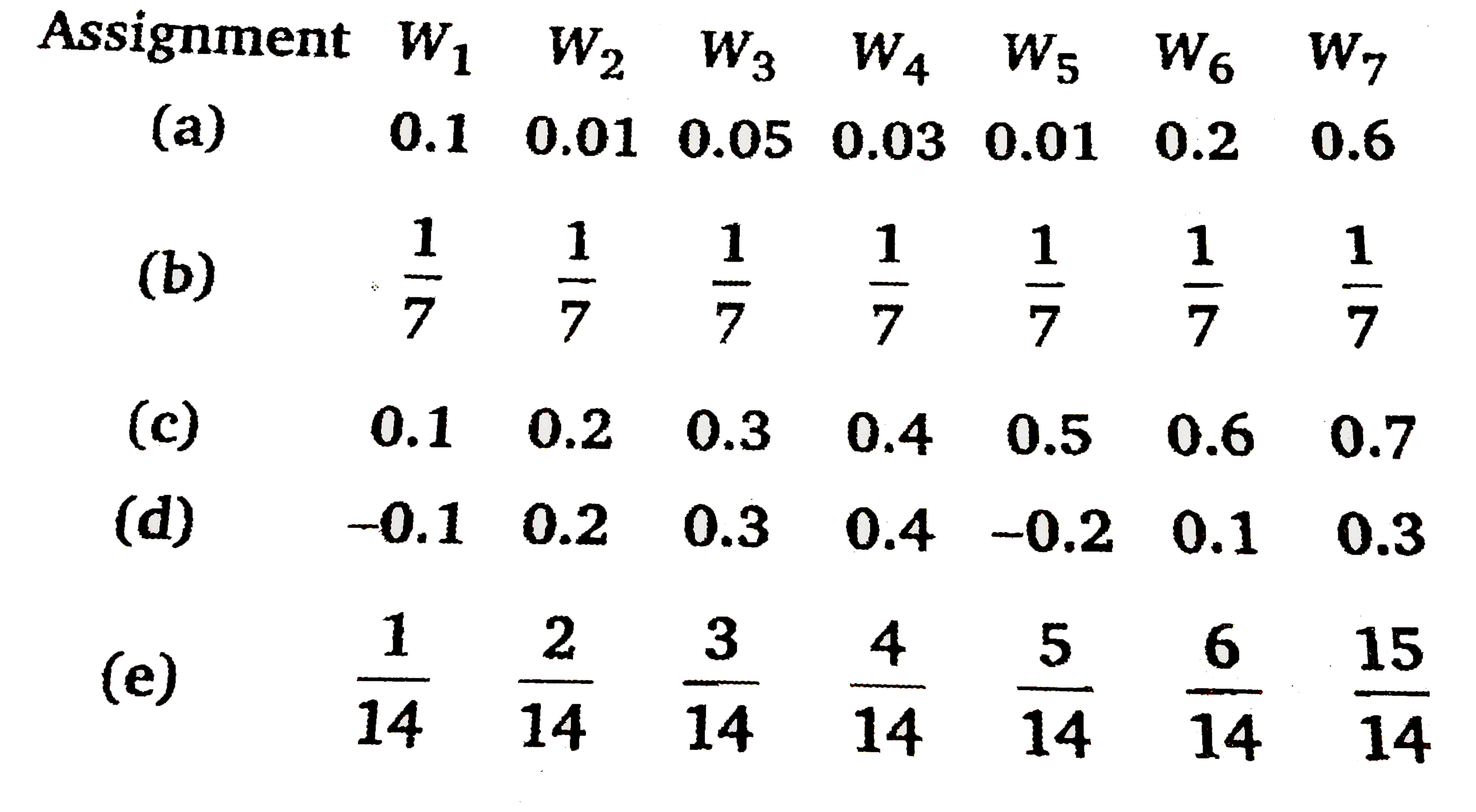A coin is tossed three times, consider the following events. A : No head appears, B: Exactly one head appears and C: Atleast two appear. Do they form a set of mutually exclusive and exhaustive events?
The sample space of the experiment is
S={HHH,HHT,HTH,THH,HTT,THT,TTH,TTT}
A={TTT}
B={HTT,THT,TTH}
C={HHT,HTH,THH,HHH}
Now, A∪B∪C={TTT,HTT,THT,TTH,HHT,HTH,THH,HHH}=S
Therefore, A, B and C are exhaustive events.
Also, A∩B=ϕ,A∩C=ϕandB∩C=ϕ
Therefore, A, B and C form a set of mutually exclusive and exhaustive events.
Topper's Solved these Questions
- PROBABILITY I Book:CENGAGE ENGLISHChapter:PROBABILITY I Exercise:Solved Example
Explore 9 Videos
- PROBABILITY I Book:CENGAGE ENGLISHChapter:PROBABILITY I Exercise:Exercise 9.1
Explore 6 Videos
- PROBABILITYBook:CENGAGE ENGLISHChapter:PROBABILITYExercise:Comprehension
Explore 2 Videos
- PROBABILITY IIBook:CENGAGE ENGLISHChapter:PROBABILITY IIExercise:MULTIPLE CORRECT ANSWER TYPE
Explore 6 Videos
Similar Questions
about to only mathematics
View SolutionWhich of the following cannot be valid assignment of probabilities for outcomes of sample space S={W1,W2,W3,W4,W5,W6,W7}

View SolutionA slip of paper is given to a person A who marks it either with a plus sign or a minus sign. The probability of his writing a plus sign is 1/3. A passes the slip to B, who may either leave it alone or change the sign before passing it to C. Next C passes the slip to D after perhaps changing the sign. Finally D passes it to a refere after perhaps changing the sign. B,C,Deachchan≥thesignwithprobability2//3.<br>TheprobabilitytˆtherefereeobservesaplussignontheslipifitisknowntˆA wrote a plus sign is
View SolutionLet EandF be two independent events. The probability that exactly one of them occurs is 1125 and the probability if none of them occurring is 225. If P(T) denotes the probability of occurrence of the event T, then (a) P(E)=45,P(F)=35 (b) P(E)=15,P(F)=25 (c) P(E)=25,P(F)=15 (d) P(E)=35,P(F)=45
View SolutionA coin is tossed three times, consider the following events.
A : No head appears,
B: Exactly one head appears’ and
C: Atleast two appear
Do they form a set of mutually exclusive and exhaustive events?
View SolutionA coin is tossed three times. Event A: two heads appear Event B: last should be head Then identify whether events AandB are independent or dependent.
View SolutionA coin is tossed three times.
Event A: two heads appear
Event B: last should be head
Then identify whether events A and B are independent or not.
View Solutionएक सिक्के को तीन बार प्रक्षिप्त किया जाता है। निम्न घटनाओं को निरूपित करने वाले समुच्चय अंकित कीजिए तथा
(i) केवल पट् प्रकट होता है,
(ii) कम-से-कम दो चित्त प्रकट होते हैं,
(iii) एक चित्त प्रकट होता है।
क्या यह परस्पर अपवर्जी और निःशेष घटनाओं का समुच्चय है ?
View SolutionIf three coins are tossed simultaneously, then find the probability of the following events :
(i) Event A : No head appears
(ii) Event B : Head appears at least twice
(iii) Event C: Head appears twice.
View Solutionएक सिक्के को तीन बार उछाला गया है। निम्नलिखित घटनाओं पर विचार कीजिए।
A: कोई चित्त प्रकट नहीं होता है।
B: तथ्यतः एक चित्त प्रकट होता है और
C: कम से कम दो चित्त प्रकट होते हैं।
क्या यह परस्पर अपवर्जी और नि:शेष घटनाओं का समुच्चय है?
View SolutionA coin is tossed three times. Given that at least one head appears, what is the probability that exactly two heads will appear?
View SolutionA coin is toosed three times consider the following events. A:'No head appears', B: 'Exactly one head appears' and C: 'Atleast two heads appear'.
View SolutionA coin is toosed three times consider the following events. A:'No head appears', B: 'Exactly one head appears' and C: 'Atleast two heads appear'.
View SolutionA coin is toosed three times consider the following events. A:'No head appears', B: 'Exactly one head appears' and C: 'Atleast two heads appear'.
View SolutionA coin is toosed three times consider the following events. A:'No head appears', B: 'Exactly one head appears' and C: 'Atleast two heads appear'.
View SolutionA coin is tossed three times, consider the following events. A : ‘No head appears’, B: ‘Exactly one head appears’ and C: ‘Atleast two appear’. Do they form a set of mutually exclusive and exhaustive events?
View Solution
